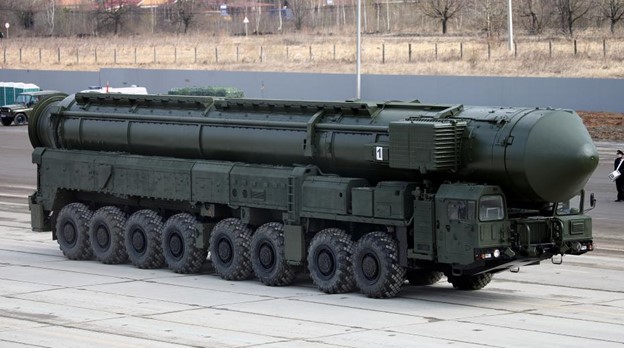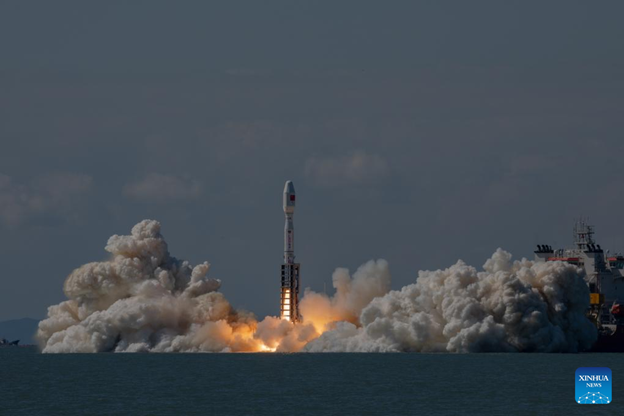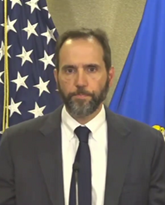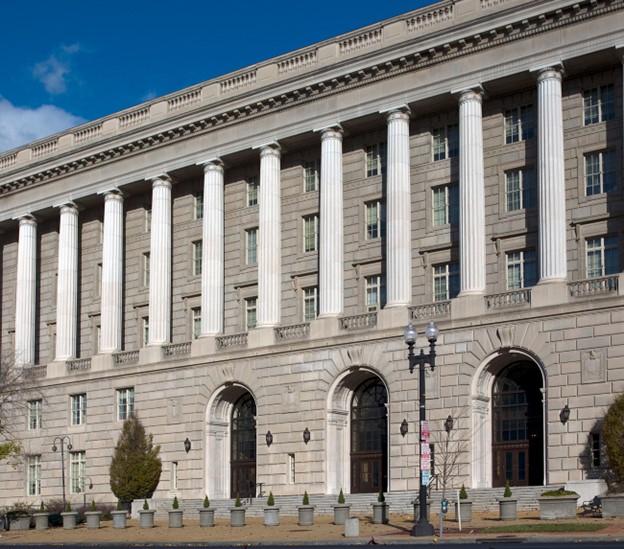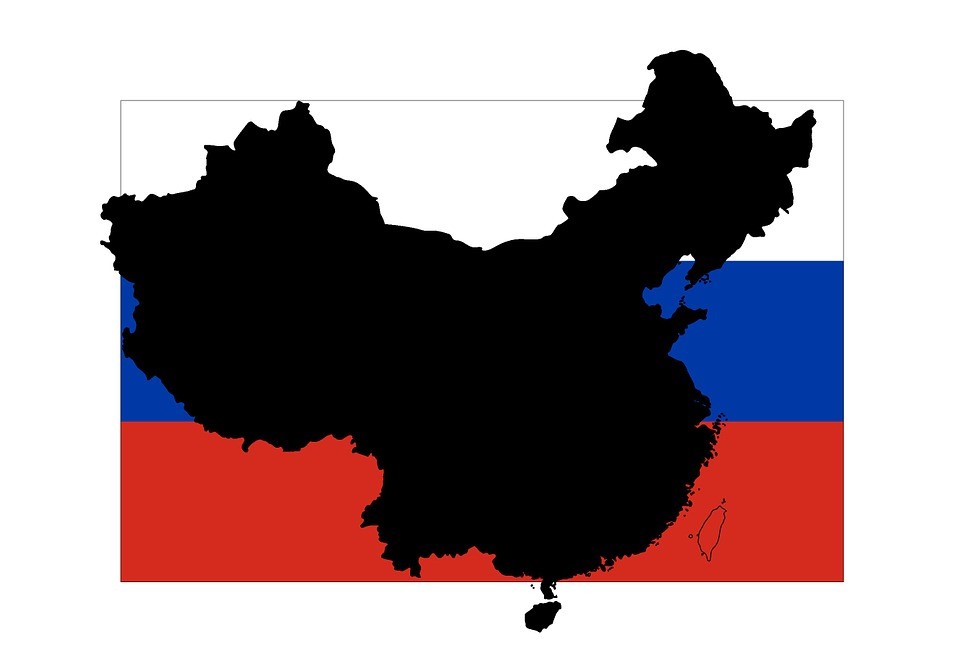Things have not gone well for Special Counsel Jack Smith this year. First, the United States Supreme Court decided that a number of the allegations brought against former President Donald Trump in Smith’s “January 6″ indictment were subject to absolute immunity, and as such, could not form the basis for a criminal prosecution. Then, Smith’s “classified documents” indictment was dismissed by Judge Aileen Cannon, who followed the reasoning of Supreme Court Justice Clarence Thomas and ruled that Smith’s appointment as Special Counsel was illegal, which means Smith did not have the power to indict former President Trump in the first place.
These reversals, however, do not spell the end of Jack Smith’s efforts. The intrepid Special Counsel has appealed Judge Cannon’s ruling to the 11th Circuit Court of Appeals. His office has also filed a superseding indictment in the “January 6” case.
As described by CNN, a superseding indictment is “a document that amends and replaces the original indictment, listing the formal charges against a defendant. A grand jury typically approves a superseding indictment after additional information or evidence has been obtained, and the new document usually adds charges or defendants to the case…in rare instances, minor deletions of details included in the initial indictment have been permitted.”
When the US Supreme Court handed down its ruling in Trump v. United States, Chief Justice Roberts distinguished between a President’s official, constitutionally mandated actions, which are entitled to absolute immunity, from acts which have a presumption of immunity, a presumption which can be rebutted, from unofficial acts which have no immunity. Since “no court has thus far considered how to draw [these] distinction[s],” Roberts stated that “[t]his necessarily factbound analysis is best performed initially by the District Court. We therefore remand to the District Court to determine in the first instance whether this alleged conduct is official or unofficial.”
Rather than allow District Court Judge Tanya Chutkin to perform this analysis, The Special Counsel filed a superseding indictment. “’The superseding indictment, which was presented to a new grand jury that had not previously heard evidence in this case, reflects the Government’s efforts to respect and implement the Supreme Court’s holdings and remand instructions’…Smith’s office said.”
In particular, Smith removed a section from the original indictment that accused Trump of using “the power and authority of the Justice Department to conduct sham election crime investigations and to send a letter to the targeted states that falsely claimed that the Justice Department had identified significant concerns that may have impacted the election outcome.” These allegations were specifically discussed in Chief Justice Robert’s opinion; “The Government does not dispute that the indictment’s allegations regarding the Justice Department involve Trump’s ‘use of official power’…the Executive Branch has ‘exclusive authority and absolute discretion’ to decide which crimes to investigate and prosecute, including with respect to allegations of election crime.” For this reason, these discussions are entitled to absolute immunity, since “[t]he President may discuss potential investigations and prosecutions with his Attorney General and other Justice Department officials to carry out his constitutional duty to ‘take Care that the Laws be faithfully executed.'” (Citations omitted.)
Yet, the removal of these allegations does not cure the defects which are carried over from the original indictment to the superseding one. In fact, this new indictment is just as facially insufficient and impossible to prove as was its predecessor.
The new indictment continues to assert that Donald Trump “used knowingly false claims of election fraud to get state legislators and election officials to subvert the legitimate election results and change electoral votes for the Defendant’s opponent, Joseph R. Biden, Jr., to electoral votes for the Defendant.” It is also alleged that Trump “organized fraudulent slates of electors in seven targeted states (Arizona, Georgia, Michigan, Nevada, New Mexico, Pennsylvania, and Wisconsin), attempting to mimic the procedures that the legitimate electors were supposed to follow under the Constitution and other federal and state laws.”
In Chapters 14 and 15 of our book, The Making of a Martyr, an Analysis of the Indictments of Donald Trump, we review these particular allegations. In particular, we discuss the inability to establish that Donald Trump did not sincerely believe that the 2020 President election was stolen from him through election fraud in the “seven targeted states.” We noted that according to Jack Smith, “Donald Trump knew that there wasn’t any ‘outcome determinative fraud’ in the 2020 presidential election because other people told him so,” those other people being some of his attorneys and officials at the Justice Department. However, “[f]rom all appearances, Trump believed there was election fraud, that it was indeed ‘outcome determinative,’ and as a result, he challenged the results of the election in every way possible.”
Further, we also examine whether or not making use of alternate electors would even constitute a criminal act. We trace prior instances of alternate electors, and efforts by progressive Democrats to convince duly-elected electors to change their votes, and conclude that “[m]ost federal prosecutors have better things to do than become involved in a political process and prosecute ‘invalid electors’ whose votes have been rejected by Congress, or those who encouraged the submission of those alternate votes.”
These problems from the original indictment remain in the superseding one. A new problem, however, is presented by the re-worked allegations regarding former President Trump’s interaction with Vice-President Pence.
Originally, the indictment claimed that Trump “attempted to enlist the Vice President to use his ceremonial role at the January 6 certification proceeding to fraudulently alter the election results…using knowingly false claims of election fraud, (Trump) attempted to convince the Vice President to use the Defendant’s fraudulent electors, reject legitimate electoral votes, or send legitimate electoral votes to state legislatures for review rather than counting them.”
In Chief Justice Roberts’ opinion, he noted that Smith’s office “explained at oral argument that although it ‘has not yet had to come to grips with how [it] would analyze’ Trump’s interactions with the Vice President, there is ‘support’ to characterize that conduct as official…[i]ndeed, our constitutional system anticipates that the President and Vice President will remain in close contact regarding their official duties over the course of the President’s term in office.”
To get around this weakness in Smith’s case, the Special Counsel now asserts that Trump “attempted to enlist the Vice President, in his ceremonial role as President of the Senate at the January 6 certification proceeding to fraudulently alter the election results.” (Emphasis added.) As this change is described by NBC News, “[t]he new indictment also notes Vice President Mike Pence’s role as president of the Senate on the day of the electoral vote count – Jan. 6, 2021 – in an apparent nod to concerns from the Supreme Court about whether evidence of Trump’s campaign to get Pence to intervene in the count should be allowed. The Supreme Court ruling said, ‘Whenever the President and Vice President discuss their official responsibilities, they engage in official conduct,’ and there is therefore a ‘presumption of immunity’ around their conversations. But the ruling also noted that Pence’s responsibility of ‘presiding over the Senate’ is not an ‘executive branch’ function.'”
It is hard to see how this change suddenly converts Trump’s actions from official to unofficial. In essence, Smith asserts that the former President was speaking to Vice President Pence as a private citizen and candidate for office, and not as President of the United States, while Pence was not acting as Vice President, but in his “ceremonial” capacity as President of the Senate. In the alternative, Trump, as head of the Executive Branch, spoke to Pence outside of Pence’s Executive Branch responsibilities.
One fallacy of this argument is the attempt to paint the Vice President’s role as President of the Senate as “ceremonial.” In fact, this office is given to the Vice President specifically by the United States Constitution. Under Article I, Section 3, Clause 4, “The Vice President of the United States shall be President of the Senate, but shall have no Vote, unless they be equally divided.” Constitution Annotated makes clear that this role is far from “ceremonial”; “In addition to casting the tie-breaking vote when the Senate is divided equally, the President of the Senate also, among other things, conducts the electoral count and attests that an enrolled bill has been passed by the Senate. By affixing his or her signatures to an enrolled bill the President of the Senate along with the Speaker of the House indicates that the bill has passed Congress and is ready for presentment to the President.”
Thus, Pence’s “ceremonial” role as President of the Senate is a duty which lies outside of his responsibilities to the Executive Branch as Vice President. This is a duty he owes to the Legislative Branch. But as outlined, that role is far more than “ceremonial.”
While it is true that the Supreme Court used the example of the President’s interaction with those he supervises in the Executive Branch (eg, the Attorney General) as a model for actions which enjoy absolute immunity, in adopting this example so closely, Smith takes the narrow view that the President’s interactions with those outside the Executive Branch are not actions which are entitled to immunity.
This view is demonstrably wrong.
Under Article 2, Section 3 of the United States Constitution, the President “shall from time to time give to the Congress Information of the State of the Union, and recommend to their Consideration such Measures as he shall judge necessary and expedient.” (Emphasis added.)
Based on this clause in the United States Constitution, there is a view of the evidence possible, that then-President Trump was consulting with Vice President Pence, in Pence’s capacity as President of the Senate, “in consideration” of a measure that Trump deemed “necessary and expedient,” that is, securing a free and fair election. If that were the case, then President Trump would be entitled to absolute immunity for his actions.
At best, then, all Smith has done is state a claim in rebuttal of the presumption of Executive action entitled to absolute Immunity. The allegations in the superseding indictment do not establish that Trump was acting solely as a candidate, in an unofficial capacity, and not as President, to insure that the election was fair.
Thus, much like Smith’s allegations regarding former President Trump’s “knowingly false claims of election fraud” and his “fraudulent slate of electors,” Smith has set up yet another straw man with his superseding indictment. HIs allegations are premised on suppositions unsupported by logic, or the facts. How can Smith prove that Vice President Pence’s role as President of the Senate is merely ceremonial, and how can he establish that Trump addressed Pence as a private candidate for office, and not in his Constitutional role as President of the United States, acting in consideration of something he felt was “necessary and expedient,” that is, to safeguard the nation’s election process from what Trump believed to be an obviously stolen election?
If Smith’s new allegations serve only as an attempt to rebut the assumption that former President Trump’s actions were taken in his official capacity, and therefore subject to immunity, then Jack Smith continues to fall short of the standard necessary to prove Donald Trump guilty of any crime, the standard that applies in all criminal cases – proof of guilty beyond a reasonable doubt.
Judge John Wilson served on the bench in NYC
Photo: Special Counsel Jack Smith (official photo)
